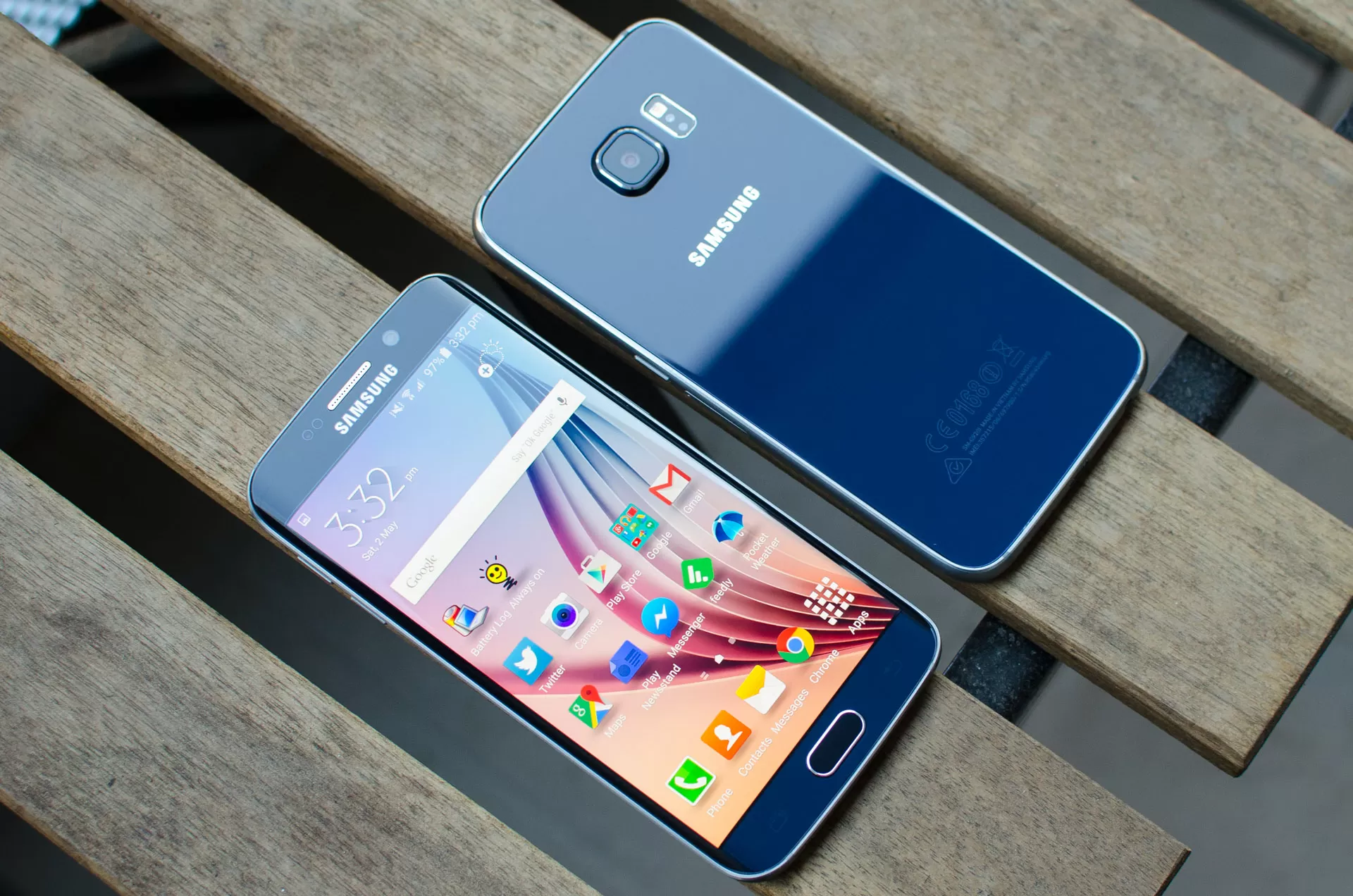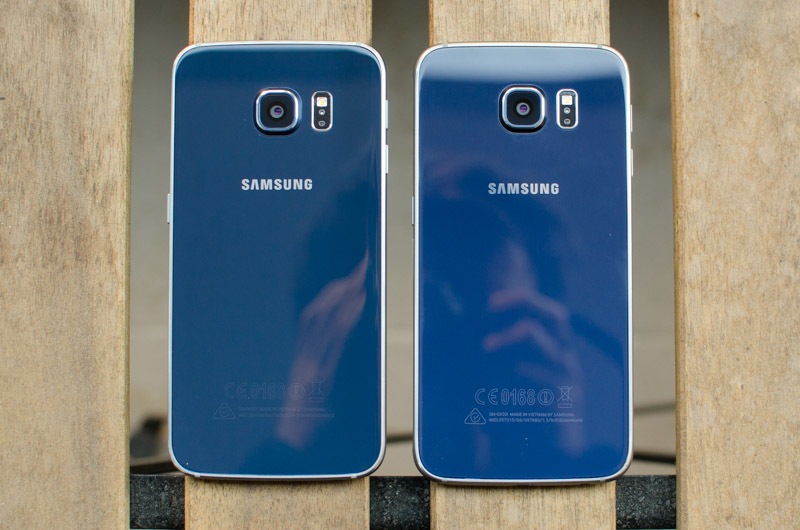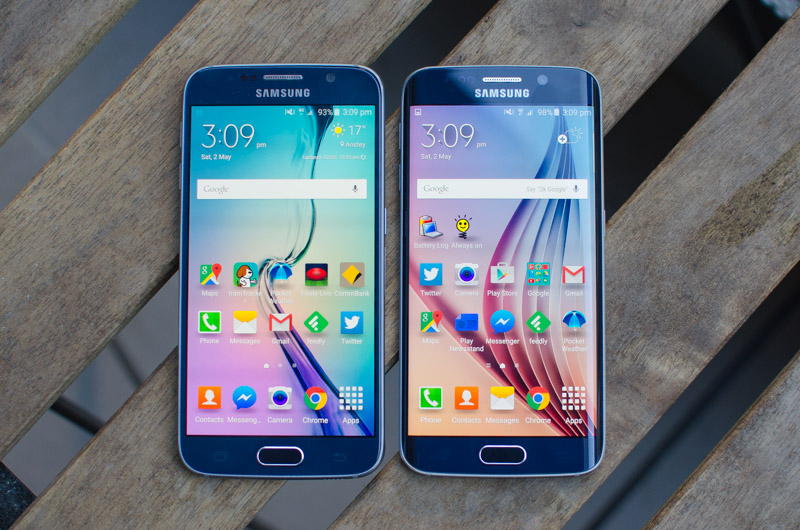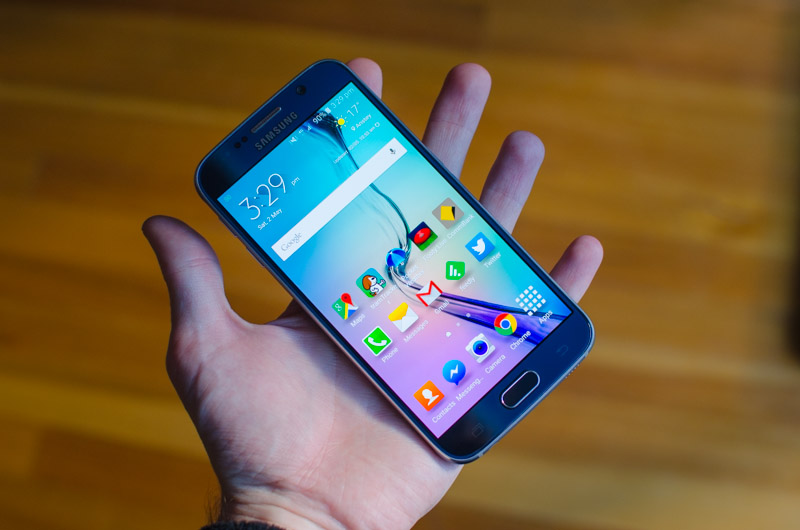Hardware Overview: Meet the Exynos 7420
The main new piece of hardware that's found inside the Galaxy S6 and S6 Edge is Samsung's Exynos 7 Octa 7420 SoC. This is the first time since the original Galaxy S that Samsung hasn't produced both a Qualcomm Snapdragon- and Exynos-powered variant of their flagship, with Samsung choosing to ignore the Snapdragon 810 used in its competitors in favour of a pure in-house design.
The Exynos 7 Octa 7420 is reasonably similar to the Exynos 7 Octa 5433 that was used in the Exynos Galaxy Note 4. Samsung is still using an ARM big.LITTLE design with heterogeneous multi-processing, and the CPU cores used are still of the same type. This means we're seeing four 'big' ARM Cortex-A57 cores for high performance tasks, alongside four 'LITTLE' ARM Cortex-A53 cores for low-power tasks.
Compared to the Exynos 5433, Samsung has raised CPU clock speeds across the board. The A57 cluster is now clocked at 2.1 GHz, up from 1.9 GHz; and the A53 cluster is clocked at 1.5 GHz, up from 1.3 GHz. On paper this equates to a raw performance boost of 10-15%. As all the CPU cores use the ARMv8 architecture, the SoC itself is 64-bit compatible, and unlike with the Note 4, 64-bit support has been enabled for the Galaxy S6 and S6 Edge.
On the GPU side, Samsung has opted for an ARM Mali-T760 GPU, though for the Exynos 7420 they've increased the shader core count from six to eight (in other words, this is a Mali-T760 MP8) and increased the clock speed from 700 MHz to 772 MHz. This should provide a very handy performance boost, bringing it in-line with the Adreno 430 GPU in the competing Snapdragon 810 SoC.
More importantly, the Exynos 7420 is the first mobile SoC to be built using Samsung's 14nm LPE manufacturing process. Not only does this shrink down the die size by around 45% compared to the 20nm Exynos 5433, it also brings lower power requirements, which will help deliver similar performance for longer. This is a crucial win for Samsung, especially considering there were concerns over Qualcomm's 20nm Snapdragon 810 on power consumption, throttling and heat output fronts.
The Exynos 7420 also features an LPDDR4 memory controller running at 1555 MHz, which equates to bandwidth of 24.88 GB/s. This is significantly higher bandwidth than the LPDDR3 memory controller on the Exynos 5433 provided, which will be especially handy for the GPU. On the Galaxy S6 and S6 Edge, the controller is attached to 3 GB of RAM.
Internally we also get 32, 64 or 128 GB of NAND, which is the only storage available to the device due to the removal of the microSD card slot. There's also Category 6 LTE support, Wi-Fi 802.11a/b/g/n/ac, Bluetooth 4.1, GPS+GNSS, and NFC. Wireless charging is included - supporting both the Qi and PMA standards - to charge the 2,550 mAh battery in the S6 (or the 2,600 mAh battery in the Edge).
Next to the rear camera on the back panel is the heart rate monitor, which remains the same as the version found on the Galaxy Alpha. In other words, it can still measure your heart rate and blood oxygen saturation, but it can't measure UV intensity like the Note 4. I found the positioning of the sensor to be a little awkward on the Galaxy S6 compared to previous models, especially for a right-hander, but then again I didn't exactly use the feature all that often.
One aspect that has received a welcome upgrade is the fingerprint sensor, which now uses a touch-based sensor rather than a swipe-based sensor. The end result is a much more accurate, more reliable and faster to use sensor. It's not quite as fast as the iPhone 6's Touch ID, but it's now fast enough and reliable enough that I actually kept fingerprint-based security enabled throughout my time testing both the S6 and the S6 Edge.



